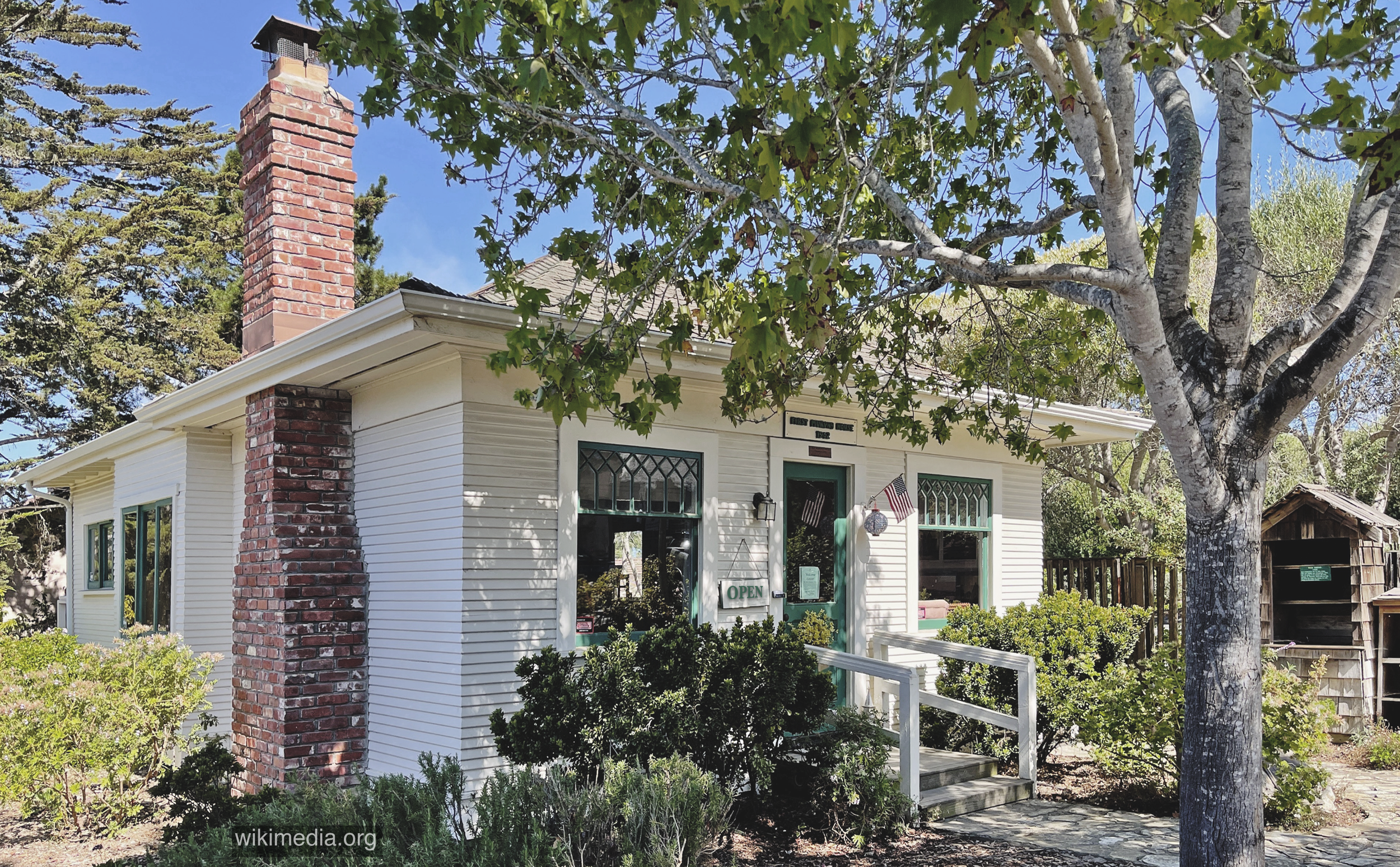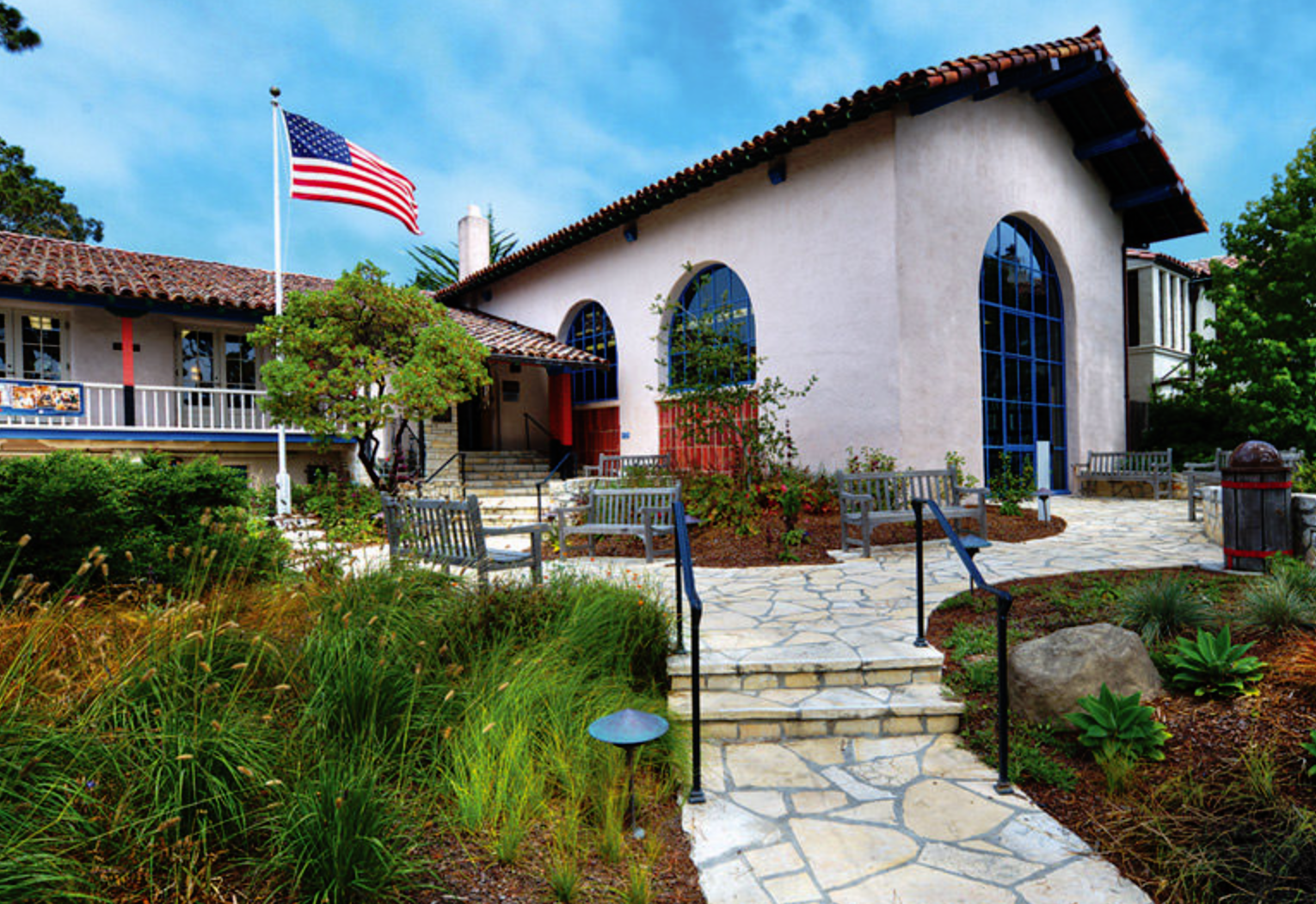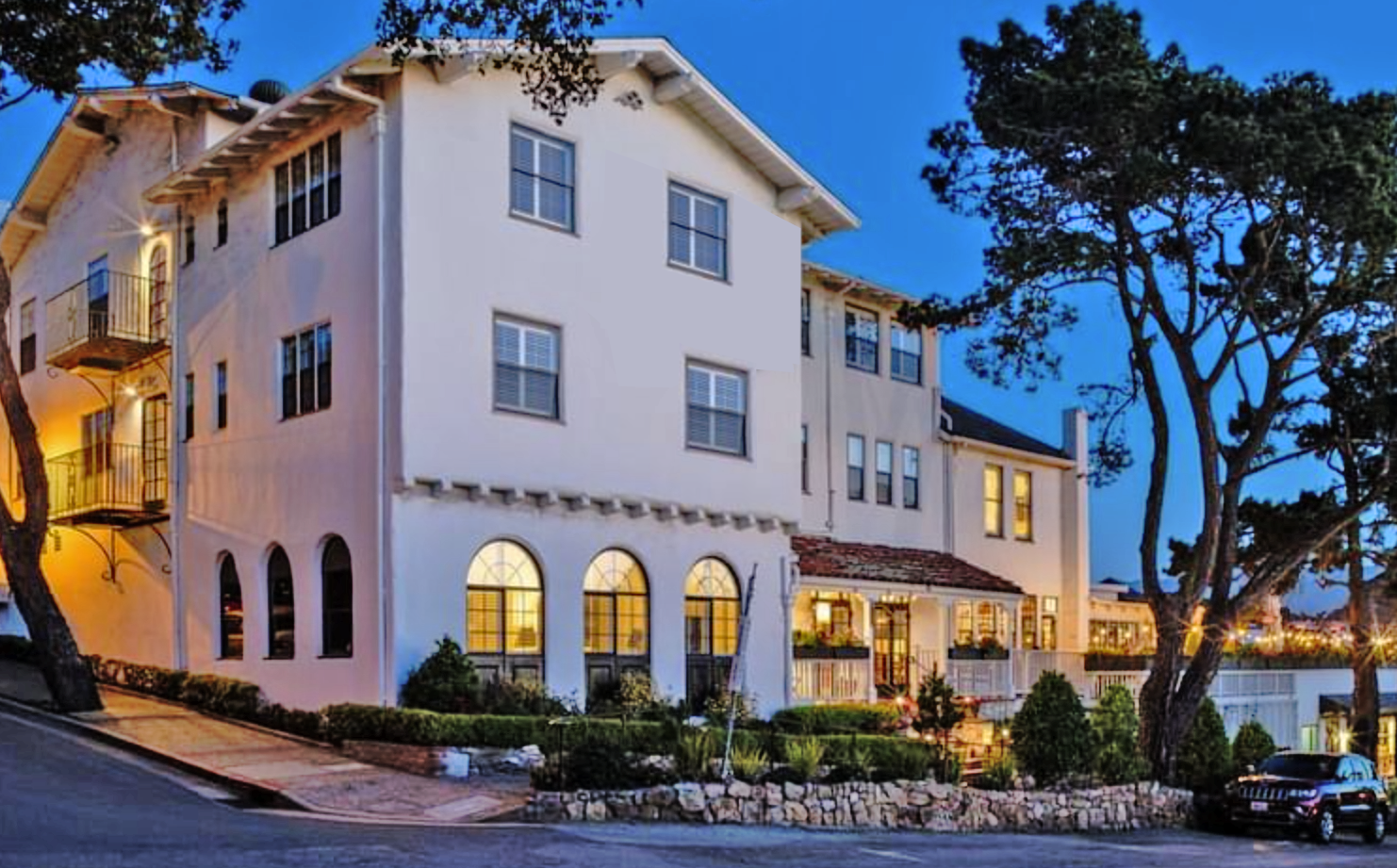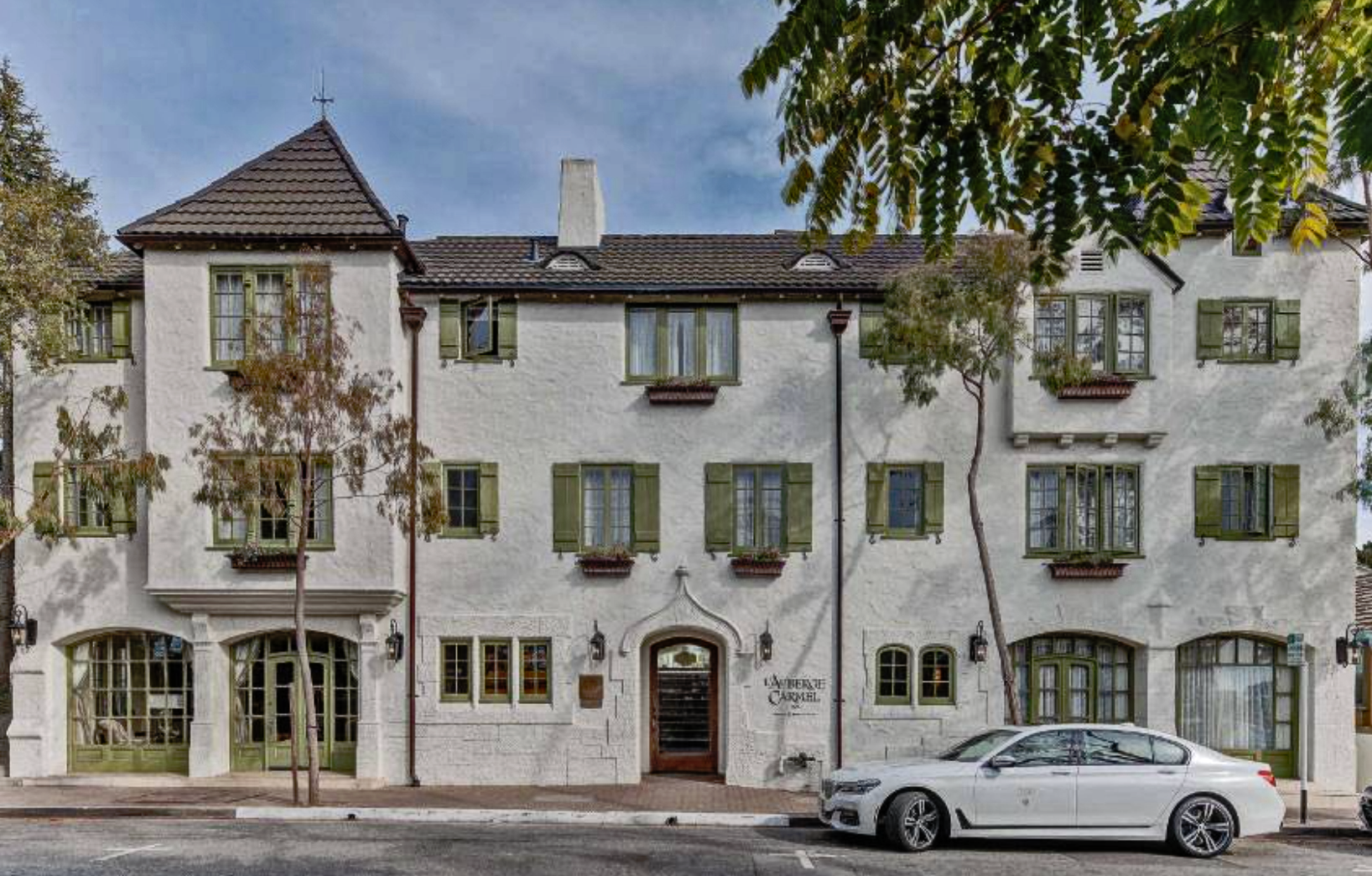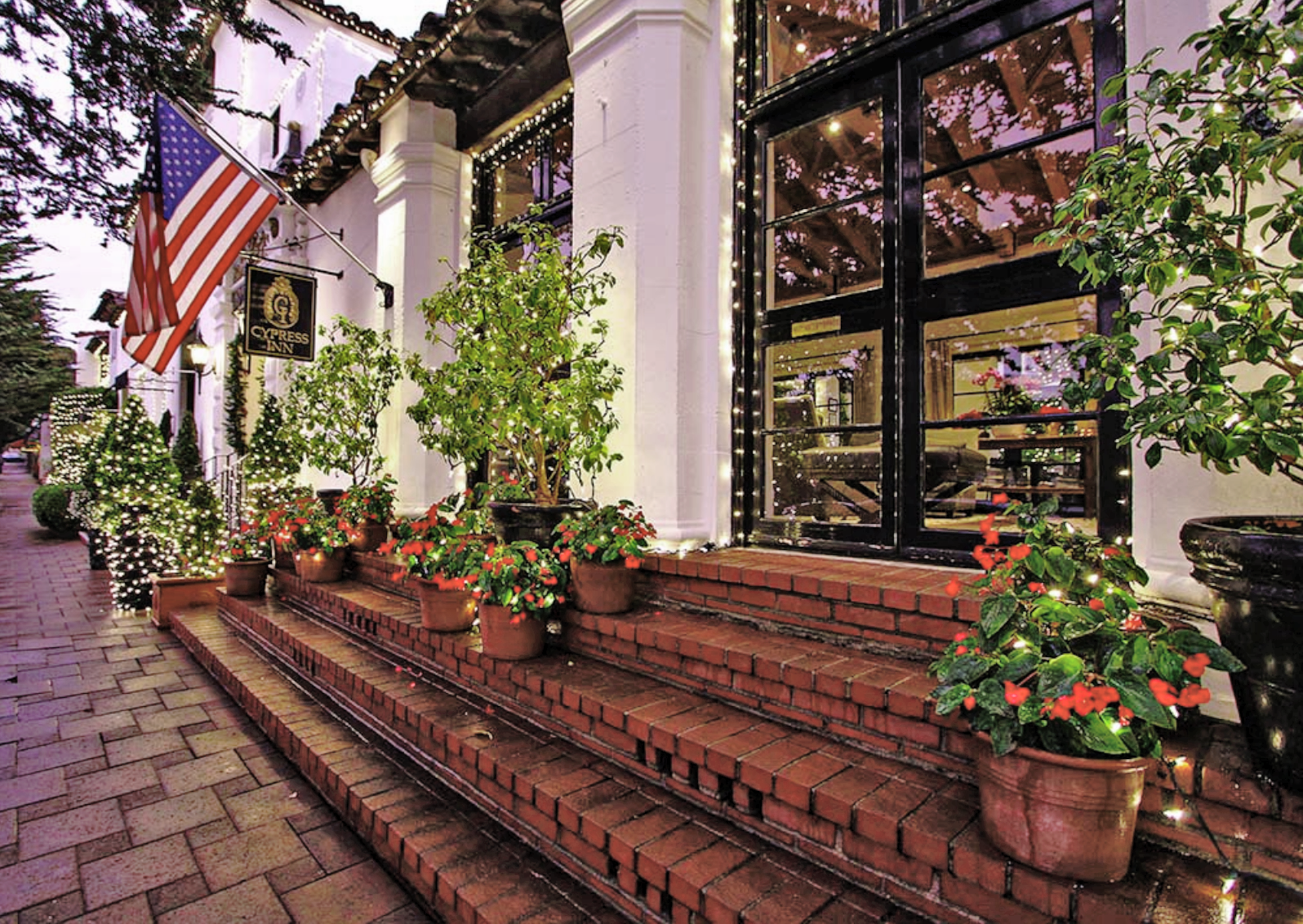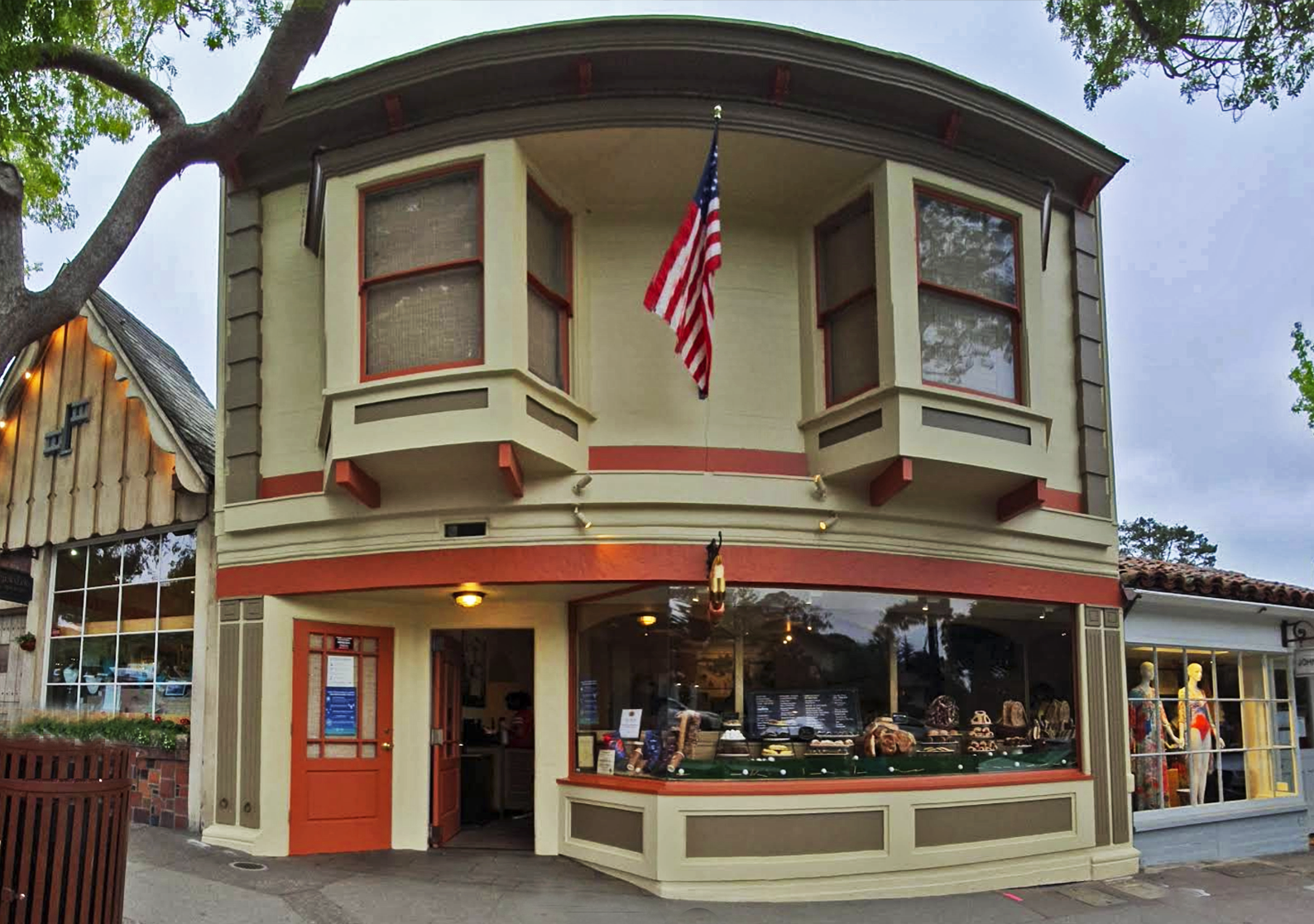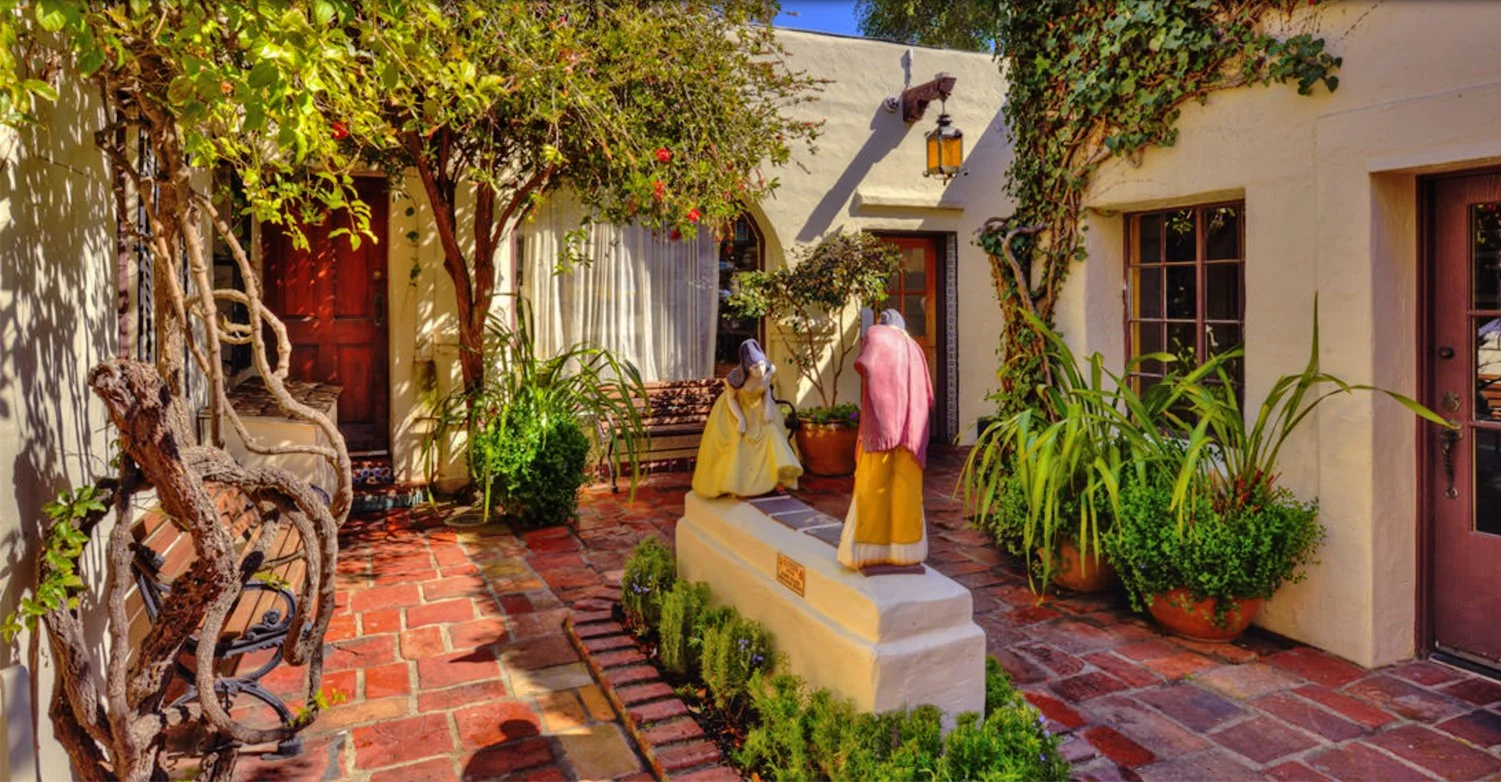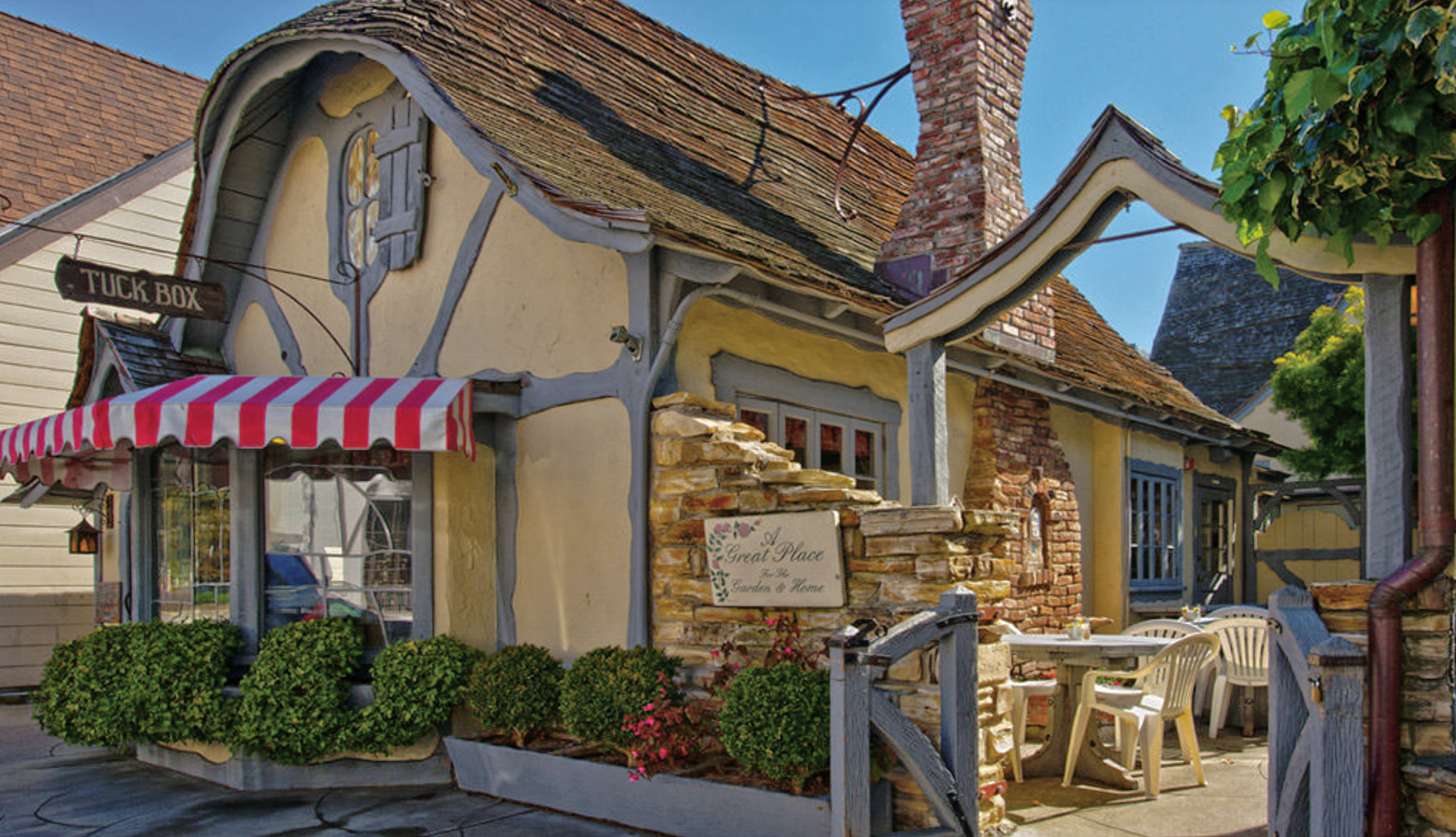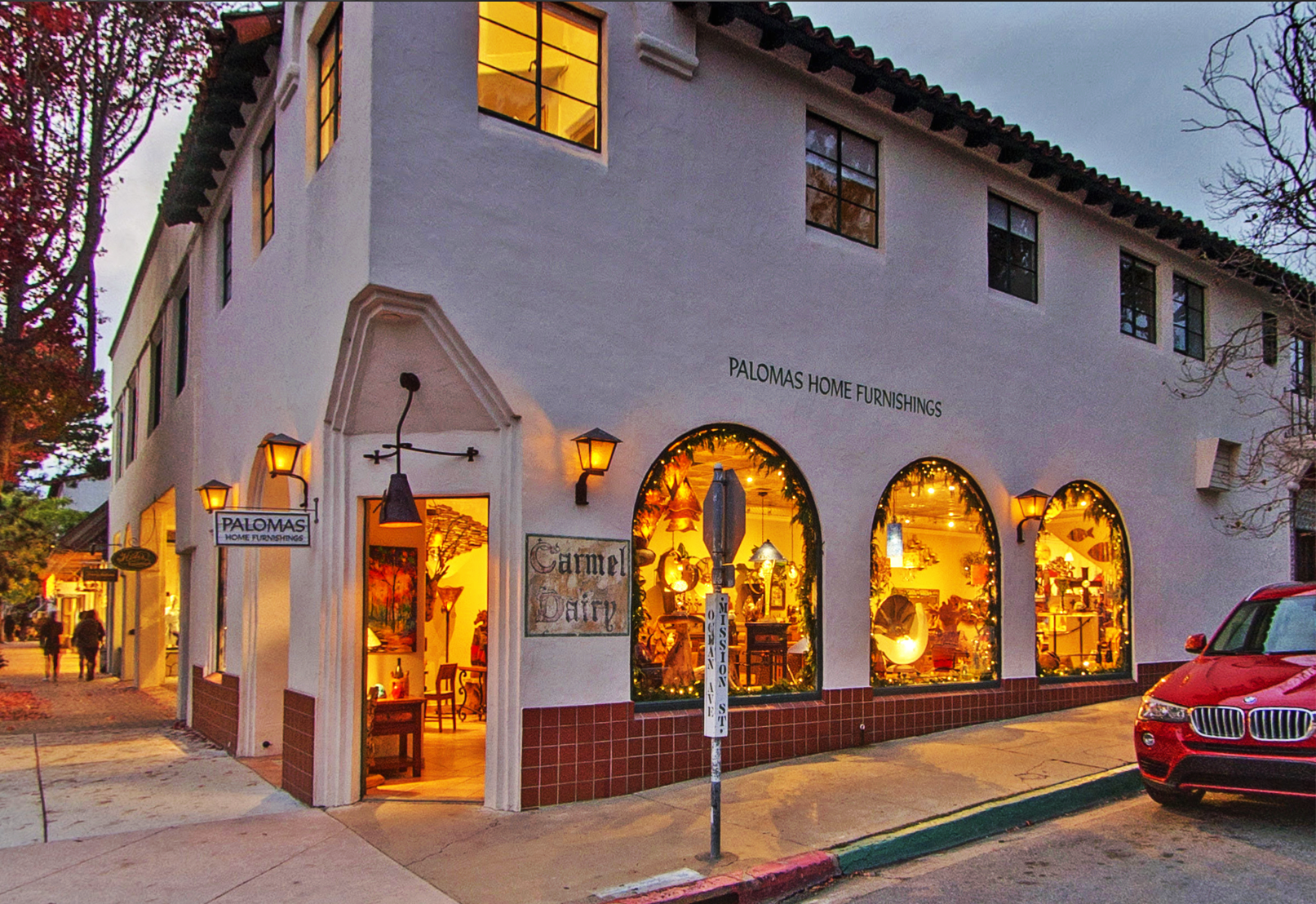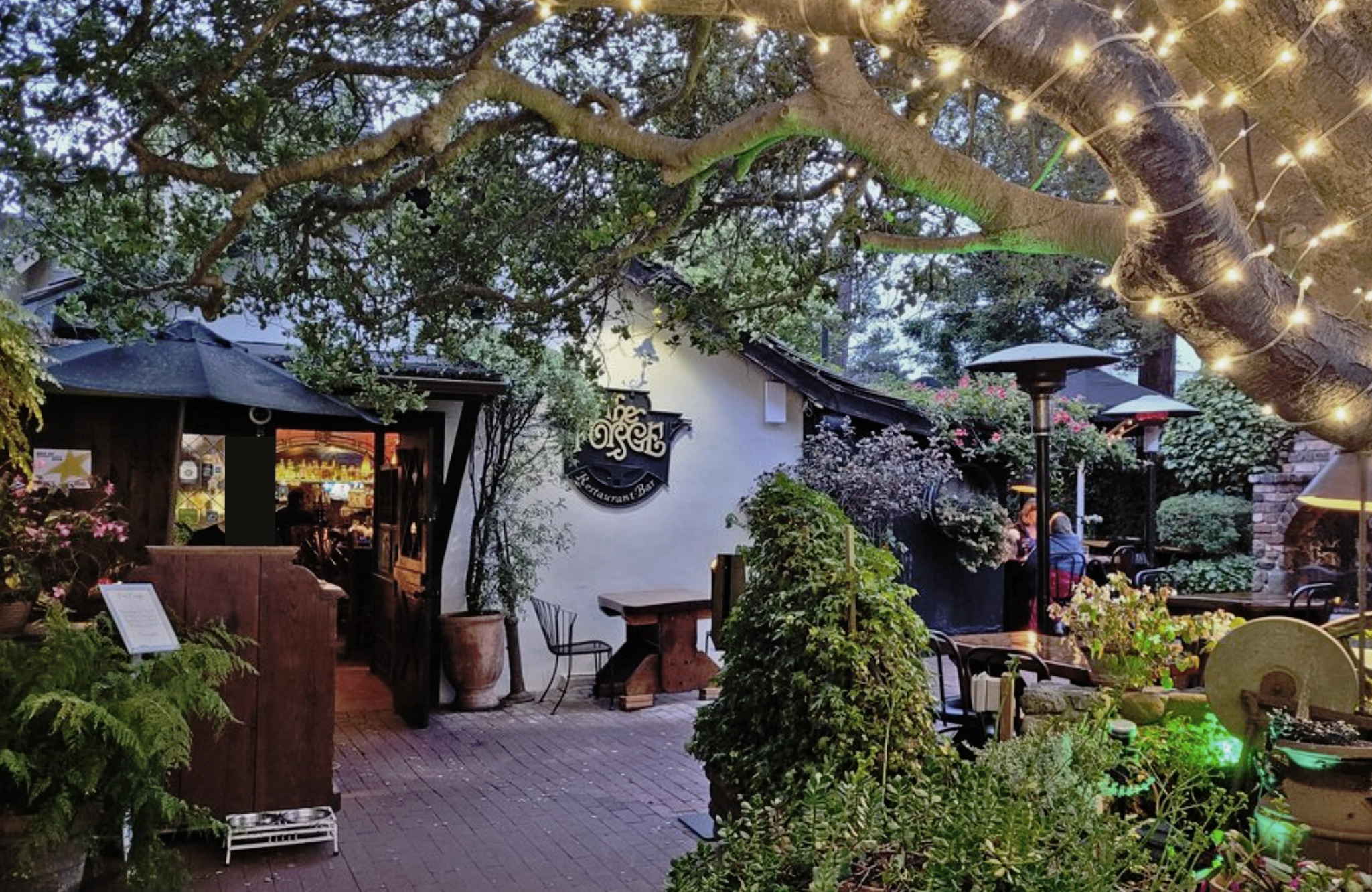THROUGH THE DECADES
A BRIEF HISTORY of CARMEL
••• 1770 •••
Construction of the San Carlos Borromeo de Carmelo Mission began near the mouth of the Carmel River under Father Junipero Serra, with labor by local Costanoan Rumsen people. Originally planned for Monterey, Serra moved the mission to Carmel for its fertile soil and water, away from the Presidio’s soldiers.
••• 1850 •••
Scottish immigrant John Martin established a ranch and dairy on the Carmel River estuary. In 1926, the Valley Ranch Club formed on the site, preserving several original buildings, one later used as an Officers Club in World War II. Clint Eastwood purchased the property in the 1980s and transformed it into a resort honoring its historic roots.
••• 1880 •••
Hoping the Southern Pacific Railroad would extend to Carmel Mission, Monterey realtor Samuel J. Duckworth and his brother Belisarios planned a Catholic resort town on nearby undeveloped land. They acquired 324 acres from baker Honore Escolle and mapped town lots. A few buildings went up, but the railroad never came, and their vision faded. This 1890 photo shows Samuel Duckworth overlooking his hoped-for "Carmel City.”
••• 1890 •••
Abbie Jane Hunter and her San Francisco-based Women’s Real Estate Investment Company take over from the Duckworth brothers and begin a new development scheme. This is the first time the name “Carmel-by-the-Sea” is used. New homes are built and families begin to arrive — a hometown is born!
••• 1900 •••
The Carmel Development Company, with partners J. Frank Devendorf and Frank Powers, push to populate Carmel with inexpensive lots and easy terms. Devendorf becomes a long-term figurehead of Carmel civic work and promotion. He had a spectacular view of the Pacific Ocean from his home in the Carmel Highlands.
••• 1910 •••
Ocean Avenue begins to take on the look of a village Main street with many businesses set up to serve the growing community of residents. Pine trees, wisely planted by Frank Devendorf a decade earlier, marked the center divide.
••• 1920 •••
Carmelites have long cherished their festive events, oeen featuring costumes, parades, and animals. The Dutch Market, an early fundraiser for the Arts and Crafts Club was held near the Pine Inn, and was one such tradition.
••• 1930 •••
The 1st Annual Carmel Kite Festival was launched near Flanders Mansion, and was founded by Rev. Willis G. White, a veteran of similar events. His passion showed in his belief that kite days brought all ages together outdoors. A pre-flight parade, led by the mayor and starting at Sunset School, soon became part of the tradition. The final festival was held in 2006.
••• 1940 •••
Carmel High School, on Highway One at the top of Ocean Avenue, was built with the auditorium added in the 1950’s. Prior to the new high school, Carmel youth rode the bus over the hill to attend the high school in Monterey.
••• 1950 •••
As the town grew, so did the bulletin board, packed with notices and announcements of local events, houses for sale or rent, and “help wanted" requests.
••• 1960 •••
The annual Sandcastle Contest on Carmel Beach began as a fun, friendly competiton by the Monterey Bay Chapter of the American Institute of Architects. Despite occasional tides washing away entries, the event remained a beloved tradition. It continues each year on Carmel Beach.
••• 1970 •••
Carmel Plaza, the beautifully landscaped center of Carmel’s shopping paradise, begins construction in 1972.
••• 1980 •••
Clint Eastwood is elected Mayor of Carmel. Having been an area resident for many years and a Carmel businessman, Clint felt it time to give back to his community and assume a leadership role. He addressed the Carmel Chapter of the American Red Cross on the occasion of their 50th Anniversary in 1987.
••• 1990 •••
It Took a Village. The First Murphy House, named because it was the first house constructed (1902) by a young Michael J. Murphy, soon to become Carmel’s most prolific designers and builders, is relocated to a lot on Lincoln near the library. It is now the home of the Carmel Heritage Society.
••• 2000 •••
Sunset Theater opens aeer extensive remodeling. World-class performances and the Bach Festival are showcased in the renovated theater, so long an important part of Carmel’s performing arts community.
••• 2020 •••
The Carmel Shell: Located on the façade wall at Mission and 6th, the mural pays homage to various historic landmarks throughout the village, from the colors inspired by the original murals within the Carmel Mission, to the patterns which pay tribute to the tile steps by Liile Napoli.
PLACES:
Historic Walking Tours
At the turn of the last century, little about the Carmel homescape rivaled the appeal of the magnificent seascape. That is, until James Franklin Devendorf and Frank H. Powers ordered the planting of 100 pine trees to be planted right down Main Street – now Ocean Avenue – then invited young Michael J. Murphy to come to Carmel to build homes and buildings. Murphy built his first house in 1902 around the tent in which his family was living. Today, The First Murphy House is a Welcome Center in town where this self-guided historic walking tour begins.
1. First Murphy House
Built in 1902 by Michael J. Murphy when he was 17 years old, it was the first of more than 300 houses and many commercial buildings he would build in Carmel.
2. Harrison Memorial Library
Designed by the well-known architect Bernard Maybeck and built by Michael J. Murphy in 1926.
3. Pine Inn
It began as the El Carmelo Hotel in 1890 at the top of town. In 1903 it was moved to its present site and expanded.
4. Cottage of Sweets & Court of the Golden Bough
Originally built in 1922 on Dolores and Ocean as a loom shop, it was moved to Ocean and Monte Verde to be ticket booth for Golden Bough Playhouse. The theater burned down in 1935 during a play called "By Candlelight." A new theater was built on Monte Verde between 8th & 9th Ave., and it burned down in 1949 while showing, again, "By Candlelight!" A third theater was built there and remains today.
5. City Hall
Originally it was the All Saints Church. In 1912, Frank Devendorf, developer of Carmel, donated the lot to the Episcopalians, who had held services at the Forest Theater.
6. L'Auberge
Originally the Sun Dial Lodge and first apartment house in Carmel, it was built in 1929 by former mayor Allen Knight.
7. Church of the Wayfayer
Frank Devendorf donated the land for a community church in 1903. In 1940 it was torn down and a new church designed by Robert Stanton was erected.
8. Cypress Inn
The Cypress Inn was originally La Ribera and officially opened on July 3, 1929. It was owned by Dr. R.A. Kocher and designed by Oakland architects who studied Mediterranean-style buildings in Spain and had designed many such buildings in Santa Barbara.
9. Seven Arts Building & Court
Built for Herbert Heron in the late 1920s, this was the beginning of the Carmel Art Association.
10. Carmel Bakery & Coffee Co.
It was built in 1904 and has always been a bakery.
11. T.A. Oakes Building
This was originally the first U.S. Post Office. In the 1920s, City Hall and the Police Department moved upstairs.
12. La Bicyclette
It was built as the pharmacy for the sanatorium, with doctors' offices upstairs off 7th Avenue.
13. El Paseo Courtyard
Many of the tiles on these Mediterranean buildings came from Spain. The sculpture was done by Jo Mora in 1927, who also did the sarcophagus of Father Junipero Serra at the Carmel Mission.
14. The Tuck Box
Built in 1926, this was Hugh Comstock's only fairy-tale commercial building and has always been The Tuck Box.
15. Las Tiendas Building
Built in 1929, its stairway, tile, and grillwork are all original.
16. Palomas Home Furnishings
It began as Carmel’s first dairy in 1932. The milk was brought in from Carmel Valley, bottled in the building, and then delivered. The original lamp is over the doorway and the original sign is on the wall next to the doorway.
17. Forest Theater
Established in 1910, it was one of the first outdoor theaters west of the Mississippi. Carmel's one and only grave is there (an exception to the ordinance) — Pal, the town dog. His headstone and plaque are still there today.
18. Hansel & Gretel Houses
Hugh Comstock built these unique, fairy-tale style homes — one of which was used entirely to store his wife, Mayotta's, handmade “Otsy-Totsy” rag dolls.
19. Forge in the Forest
Built for Francis Whitaker, an internationally known ironsmith, the Forge's bar displays his original tools and many early photos. Mr. Whitaker used The Forge to produce much of the hand-wrought hardware (hinges, door latches, sign holders, etc.) that still adorns many of the historic buildings in Carmel. The actual anvil, vise, and hearth used by Mr. Whitaker, as well as photographs of him and the original Forge building, are on display inside the current Forge in the Forest Saloon. Artist and writer Henry Miller and the internationally renowned writer, John Steinbeck were frequent visitors who met with other locals inside The Forge, to drink, tell stories and talk. The Grapes of Wrath novel was reported to have been inspired inside The Forge as a result of one such meeting.
20. Fire Station
Built in 1937 of Carmel stone, it remains a fire station today.
21. Carmel Drug Store
This complex of stores was built in 1907. In 1925 the city passed an ordinance restricting the size and style of signs. All signs not conforming were removed. No one knows why the Carmel Drugstore sign was left – maybe to remind us what Carmel could have looked like without the restricting ordinance.
22. Carmel Forecast
It was built in 1939 as the Bank of Carmel and features a bas-relief by well-known artist Paul Whitman.
23. Alain Pinel Realtors
Built in 1905, this was the site of Carmel’s first city hall and police department in 1917.
24. Carmel Art Association Gallery
Founded in 1927, Carmel’s oldest gallery features the work of local artists and is dedicated to presenting only the finest work for sale by artists living on the Monterey Peninsula.


